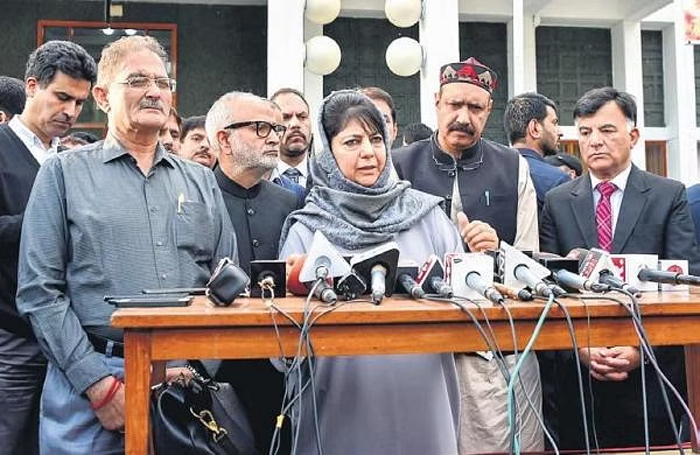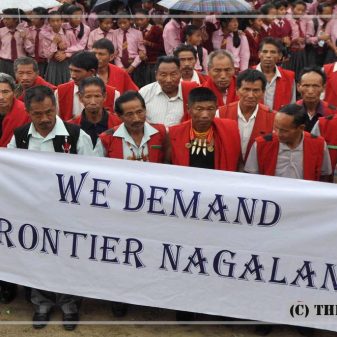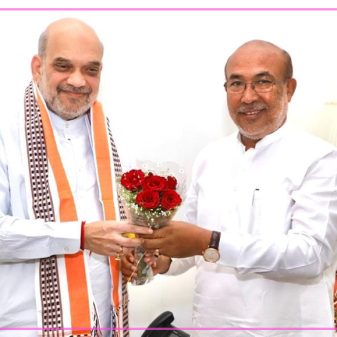
BY Gulzar Bhat
The guidelines bar these employees from criticising the governments on social media platforms, and non-compliance could land them in hot water.
It is the People’s Democratic Party (PDP) that brought BJP into Kashmir and made it familiar with the local politics. This is a general feeling among the people of Kashmir regarding the BJP’s penetration, though not rise, into the Valley. The 2014 Assembly elections, followed by a seismic shift in PDP’s political stand, helped BJP expand its footprints in Kashmir. The election results turned out to be a cliffhanger, with PDP and BJP winning 28 and 25 seats respectively, while the ruling National Conference (NC) reduced to 15 seats only.
Despite offers of unconditional support by NC and Congress to PDP for the formation of a non-BJP government, the party, after a flurry of parleys with the right-wing leadership, stitched an alliance with BJP. It took a little over two months for both the parties to come together and finally, Mufti Mohammad Sayeed was sworn in as the chief minister of undivided Jammu and Kashmir on March 1, 2015.
Political pundits billed the alliance as “unholy” as both the parties were at odds with each other, given their political and ideological outlook. Mufti, on the other hand, pulled out all the stops to justify the alliance with the party he would mince no words to upbraid in public meetings.
Following the death of Mufti, his daughter Mehbooba Mufti re-stitched the alliance and it lasted up until June 19, 2018.
Mehbooba saw a tumultuous tenure—a despicable wave of violence following the killing of popular militant commander Burhan Wani and high noon of new-age militancy re-animated by his death. The BJP completely prevailed upon Mehbooba and her party. It would not be an overstatement to say that she and her party easily capitulated to the demands of BJP.
The Agenda of Alliance (AoA)—a pact between PDP and BJP—was hardly respected and implemented, though Mehbooba always shouted from the rooftops, admiring the documents. She, however, adopted some policies and initiated steps that provided a template for the present dispensation.
One could easily draw an analogy between the two. In October 2016, her government banned the publication of Srinagar-based English language newspaper Kashmir Reader, calling it a threat to “public tranquility”. The ban remained in force for a good three months. Police also raided the printing locations of several newspapers and seized newspaper copies. The move had raised the spectre of Emergency. Mobile phones and data services also remained off-limits. Similarly, what the Valley witnessed after the Centre read down the special constitutional provisions of J&K was well-nigh a repeat of that period, though there had been no civilian killings in 2019.
On March 24, the government issued (or say re-issued) elaborate guidelines regarding the use of social media by government employees. The guidelines bar these employees from criticising the governments on social media platforms, and non-compliance could land them in hot water. The move has drawn fierce criticism from political parties in Kashmir. Mufti, who emerged as a trenchant critic of BJP after it jilted her, slammed the party for issuing the circular. She wrote on Twitter:
“Whether it was blacklisting contractors and the social media gag to employees, a clear intimidation of dispossessing people in J&K of their livelihood has emerged. Authorities have become judge, jury and executioner in complete violation of the fundamental rights of people.”
It seems that either Mehbooba has a mind like a sieve or she tweeted out of sheer innocence. A third element that we refer to in colloquial terms as “playing politics” can’t be ruled out as the reality is in deep contrast to what Mehbooba tweeted.
An 18-page order with the subject ‘Guidelines on the usage of social media by Government Employees’ was actually issued and enacted by the Mehbooba-led PDP-BJP government in December 2017. The order was issued after amending the Jammu and Kashmir Government Employees Conduct Rules. It not only barred the employees from criticising the government’s policies but also prohibited them from discussing any policy pursued by the government.
“No government employee through any post, tweet or otherwise discuss or criticise on social media any policy pursued or action taken by the government nor shall he in any manner participate in any such discussion or criticism that takes place on social media pages/communities or on microblogs,” reads the December 2017 order.
The March 24 circular is a repeat of the same social media policy which Madam Mehbooba enacted during her political hay days, and the Lieutenant Governor administration has only sought adherence to the same order. One wonders if Mehbooba has any moral ground to criticise the policy.
Even the policy at that time had met with severe criticism, with opposition political leaders saying that it lays bare the authoritarian tendencies of the state government.
The social media policy of the Mehbooba-led PDP-BJP government and now its reiteration is bound to deprive government employees of the rights they have as citizens of this country. It will prevent them from raising their concerns towards the policies that impact them. It also snatches the rights of their children/dependents from expressing their views vis-à-vis government policies.
The policy looks at government employees as individuals and not as citizens. A cursory look at the policy makes it crystal clear that a government employee has no right to endorse a particular legitimate political ideology or ponder over various societal issues as a citizen. It makes them purely apolitical. While enacting the policy in 2017, Mehbooba would have never thought that it would have a boomerang effect.
An average Kashmiri, who is known for having an unerring instinct to spot political manoeuvres, is absolutely right in saying that BJP learnt the Kashmir version of politics from the PDP.
(The writer is an Independent journalist based in Srinagar)(Courtesy: The New Indian Express)





